Part 1 – The First 8 Weeks
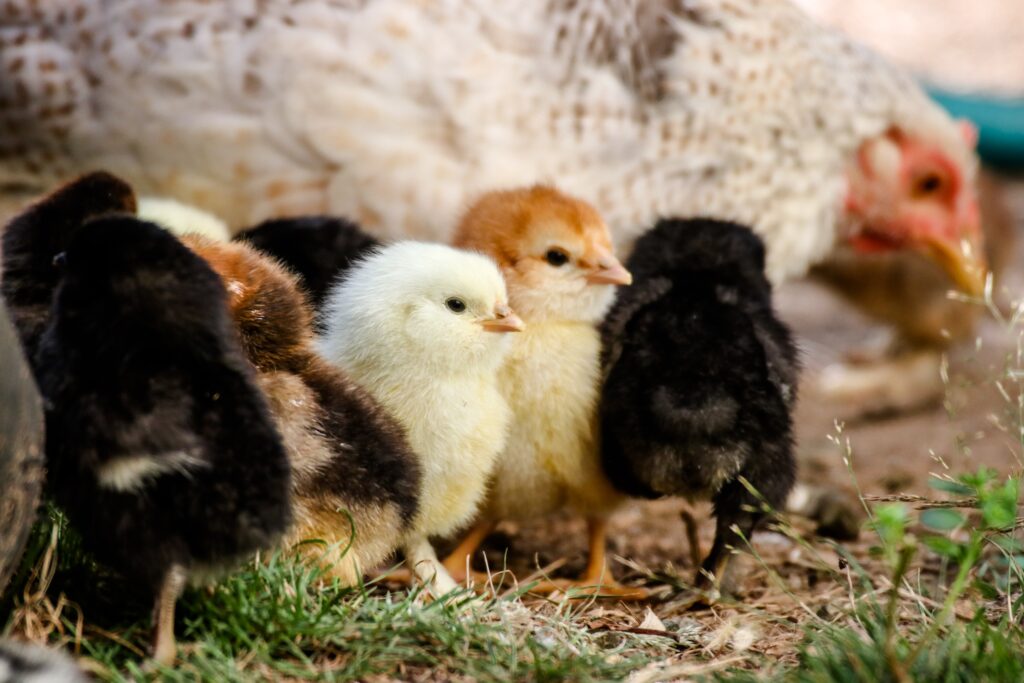
Learning how to raise chickens does not have to be a huge time consuming ordeal. When family and friends visit us their first question is how much free time does this eat up? And do you really save any money? At the surface when calculating the feed and time cost it seems like having chickens couldn’t possibly save any money at all. I have always felt during our journey that the more food we can grow on our homestead for ourselves, the less trips to the grocery store we need to make. When there is a surplus of eggs, meat, or vegetables at home we have no other choice but to eat them before they are spoiled or preserve the harvest to enjoy at a later time. Every trip to the store comes with the inevitable impulse buys that are almost always junk food or things we really just don’t need. This is where the true cost saving with growing your own food comes from.
On our homestead raising chickens is a quick 5-10 minute morning chore and a 5 minute evening chore. During the growing season one day a week I move the coop and poultry net to a new location which takes about 15 minutes. For more info on our chicken coop see my previous post The Evolution of Our Coop https://jaynesfarmstead.com/1486/the-evolution-of-our-chicken-coop-why-the-chickshaw-is-the-ultimate-solution/
I have two children under 3 years old, and my husband Ryan works a full time job off the farmstead, so any free time is very precious to us at this moment. We have figured out how to raise chickens to get the most nutrient dense egg possible, much higher quality than you can buy in the store, in as little time as possible.
Buying Chicks:
The first step to raising chickens is of course to buy them. We have always bought day old chicks either from our local Tractor Supply store or an online hatchery – such as Mcmurray Hatchery https://www.mcmurrayhatchery.com/index.html. I buy day old chicks because I want to given them the best start at life as possible. That means plenty of room, sunshine, grass, quality feed, clean fresh water and lots of bedding (something I explain in more detail below). This will ensure a healthy productive bird in the long run.
Online Hatcheries:
The best part of ordering chicks online is that you can usually find the exact type, sex, and amount of birds you want and get them shipped the exact week you want. That means you can order now for a ship date in the spring. Its best to order early because hatcheries will run out as we get closer to spring. I personally order mine no later than the first week in February. When purchasing online there is always a minimum of chicks you need to buy. Typically you need to buy at least 10 birds at a time. Most sites let you mix and match types of chickens as long as they are hatching at the same time so they can ship them together. The most crucial thing for a baby chick is to stay warm, so having some companions during their trip to your local post office is a good thing.
Baby chicks do not require food or water for up to 3 days after they are hatched, but always make sure your brooder is good to go with water, feed, and warmth before you drive to pick them up. The hatchery will notify you once your order has shipped and when to expect them to arrive at your post office. The post office will call you the day your chicks arrive there and it’s best to go get them ASAP.
Tractor Supply:
I am lucky enough to have three Tractor Supplies within a 45 minute drive from our house here in New Jersey. When I am ready for chicks in the spring I will call all three stores and ask what they have. Not only do I ask what types of chicks are available, but if they are straight runs or pullets. If the chicks are straight runs it means the chicks are unsexed and I could be buying roosters. Tractor supply employees are not going to be able to tell you the sex of the straight run chicks with any accuracy. It’s always disappointing taking care of chicks for months only to find out you have a rooster when you really wanted a laying hen. Pullets, meaning hens that have not started laying yet, is what I would recommend your first go around with raising chickens.
The variety of chicks from tractor supply is nothing compared to online hatcheries, but the minimums are much lower. The breeds each store gets is random and they don’t know ahead of time what they will be receiving. This is why it is important to call around to different stores in your area if that’s an option for you. Stores within just a few miles from each other will get different breeds and amounts of birds. I have walked out of tractor supply with as little three chicks just to round out my flock. Each state varies on what the minimum of chicks is that you need to purchase.
Tractor Supply also sells chicks online. When purchasing online from TS the minimum is always 10 birds. You also can’t choose the ship date like with most online hatcheries. Chicks typically ship within a week of ordering.
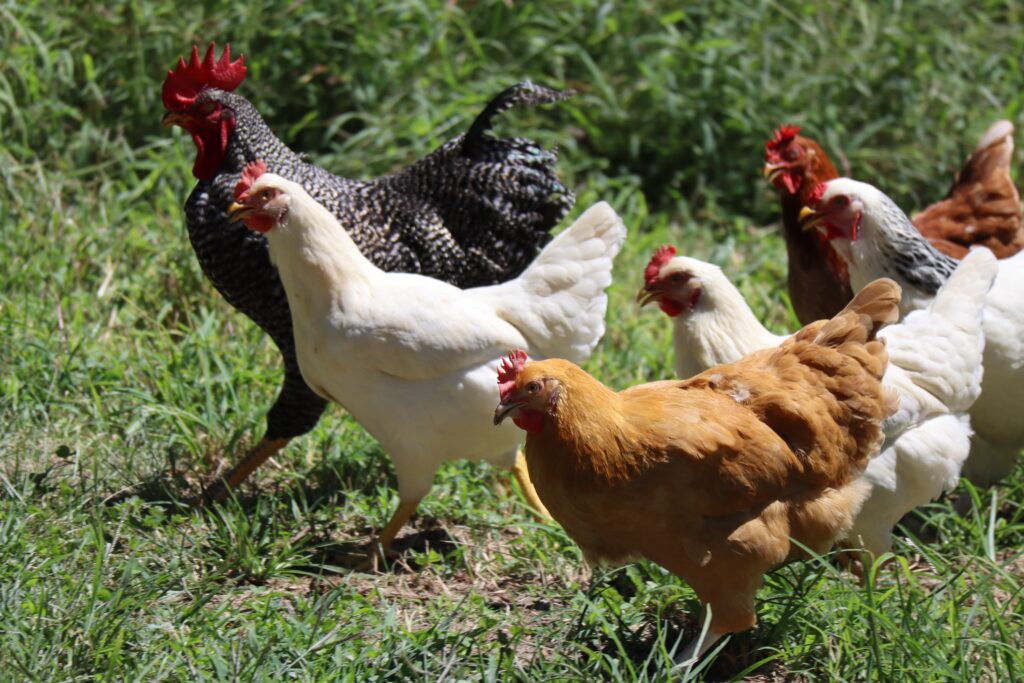
Types of Laying Hens:
The first batch of chicks we purchased were all hybrid sex link chickens. They have different names such as Red Star or isa browns and lay medium to large brown eggs. The hatchery can tell the sex the day the chicks are born by the color, hence the name “Sex Link”. These chicks are hybrids between two heritage types and bred for increased egg production. They can lay up to 360 eggs per year!
Sex links are very hardy birds that thrive in hot or cold climates. The only down side to these amazing birds is that because they lay so many eggs some farmers believe their bodies cannot keep up with production no matter how well you feed them. Over time the hens literally have to pull calcium from their bones to keep up producing so many eggs. It is believed because of this the sex link chicken egg cannot be as nutritious as an egg laid from a healthy heritage laying hen. Thats why on our farmstead we stick to non hybrid heritage laying hens.
A few types that I have had great success with are
- Australorps
- Barred Rocks
- Buff Orpington
- Rhode Island Reds
- Ameraucanas
We like to have some Ameraucanas to bring some blue/green eggs to our cartons. The heritage breeds I’ve mentioned are a heavy set bird compared to hybrid sex links. This is another plus for us because they tend to be less flighty. They have a hard time flying over the electric poultry netting we use. They are great foragers as well getting a considerable amount of their diet from the pasture. Buff Orpingtons are especially docile and great with children.
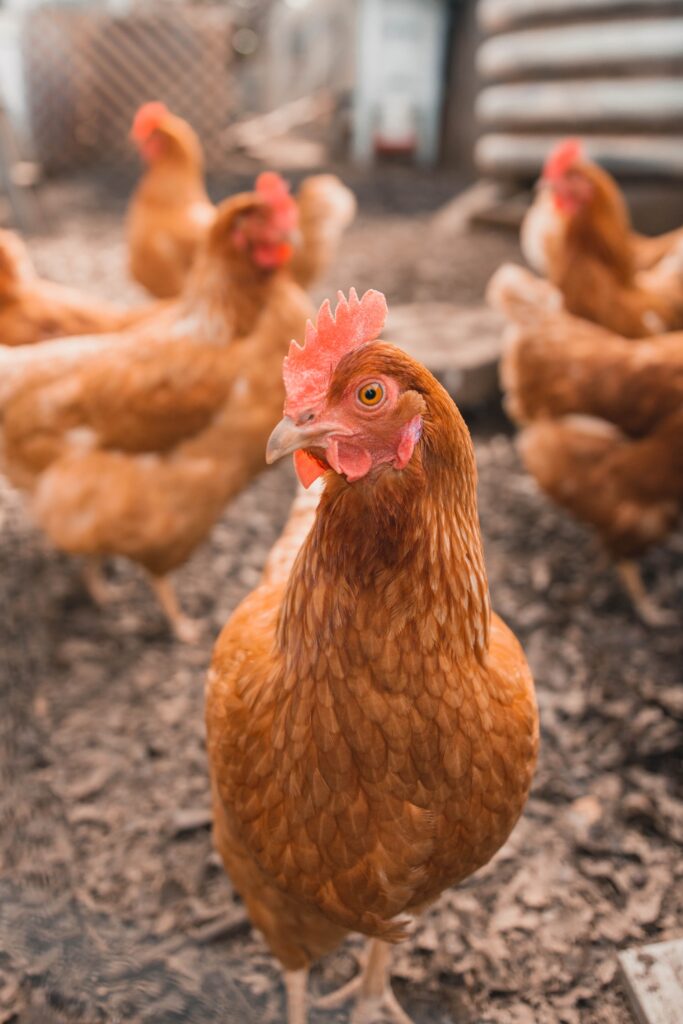
Pullets
If this is your very first time attempting to raise chickens then you want to make sure you are getting pullets. Pullets are hens that have not started laying yet. They are females so you know you will be getting eggs from them. If you buy a chicken that is unsexed then there is a chance you will get a rooster. Eventually, if keeping chickens becomes a permanent part of your life, then you may want to consider getting a rooster. However, it is not advised or necessary for a first time flock owner.
Do you Need a Rooster?
You do not need a rooster to get eggs. The first batch of birds we purchased were all pullets (meaning they were sexed female at birth) and our backyard was much more quiet. Roosters will crow all day long, not just in the morning, so if you have neighbors this could become an issue. Today we do keep a rooster because we have found the rooster helps protect the hens. He will crow out a warning when a predator is near by so the hens have a chance to run for cover. You do have to be careful of having multiple roosters. We have had competing roosters before and it became a bloody affair.
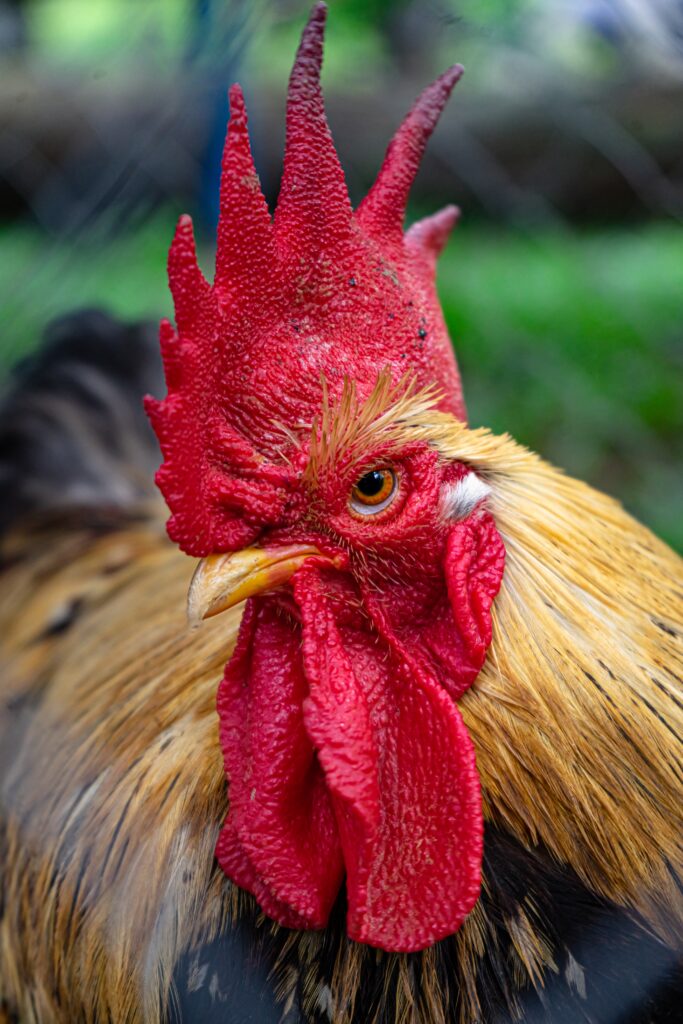
When to Buy chicks?
No matter how many times I have gotten chicks it is always exciting brining them home. I am always anxious to buy more in the early spring after being cooped up inside so much of the winter. I have learned to wait till early May in New Jersey. The sooner you can get your young chicks out on fresh grass the better. If there is snow blanketing the ground outside and the nights are freezing there is no choice but to keep them in the brooder. Fresh grass is like vitamins to baby chicks. It keeps their digestion moving so they can thrive. I have had chicks as young as 2 weeks on fresh grass in my chicken tractor if the weather is warm enough.
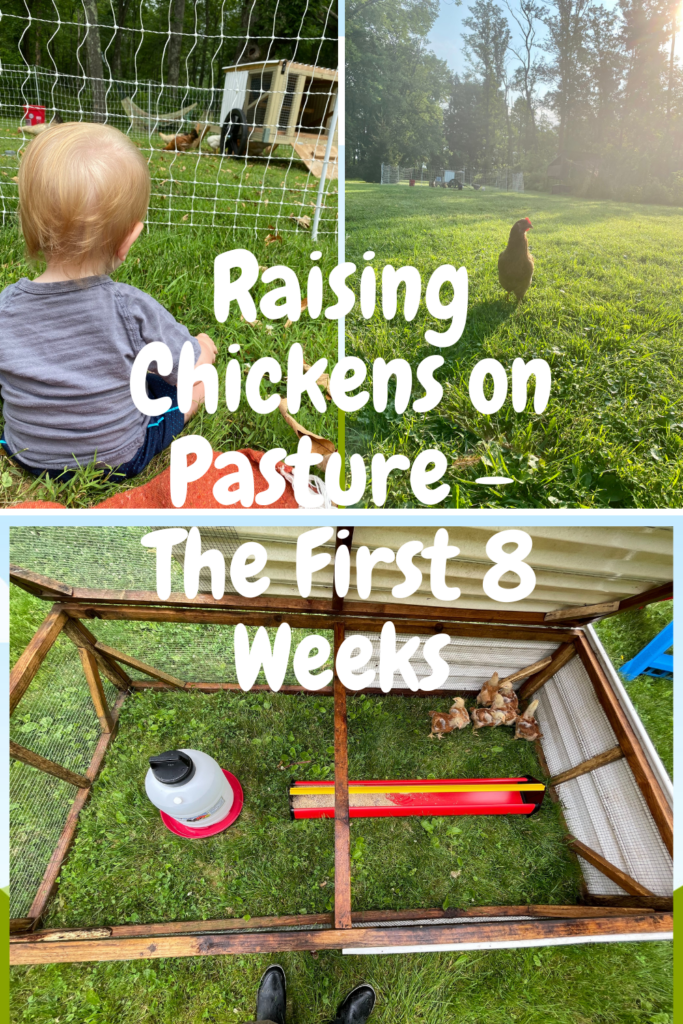
The Brooder:
A young chick without its mothers hen is not ideal, so my goal is to create a brooder that mimics the warmth and care of a mother hen in her absence. Keep in mind the chicks are going to be in the brooder for up to 4-8 weeks. You need at least 1/2 square foot per bird for the first 4 weeks and if they are staying longer 1 square foot per bird will be necessary. The brooder needs to be free from draft and predator proof. You can get as elaborate as you want with your brooder build, but we have used large Tupperware containers, brooders built from Plywood and 2x4s, and now a dirt floor shed. Natural light is a huge benefit. If they there is no natural light where you will be keeping the brooder you should add artificial lighting.
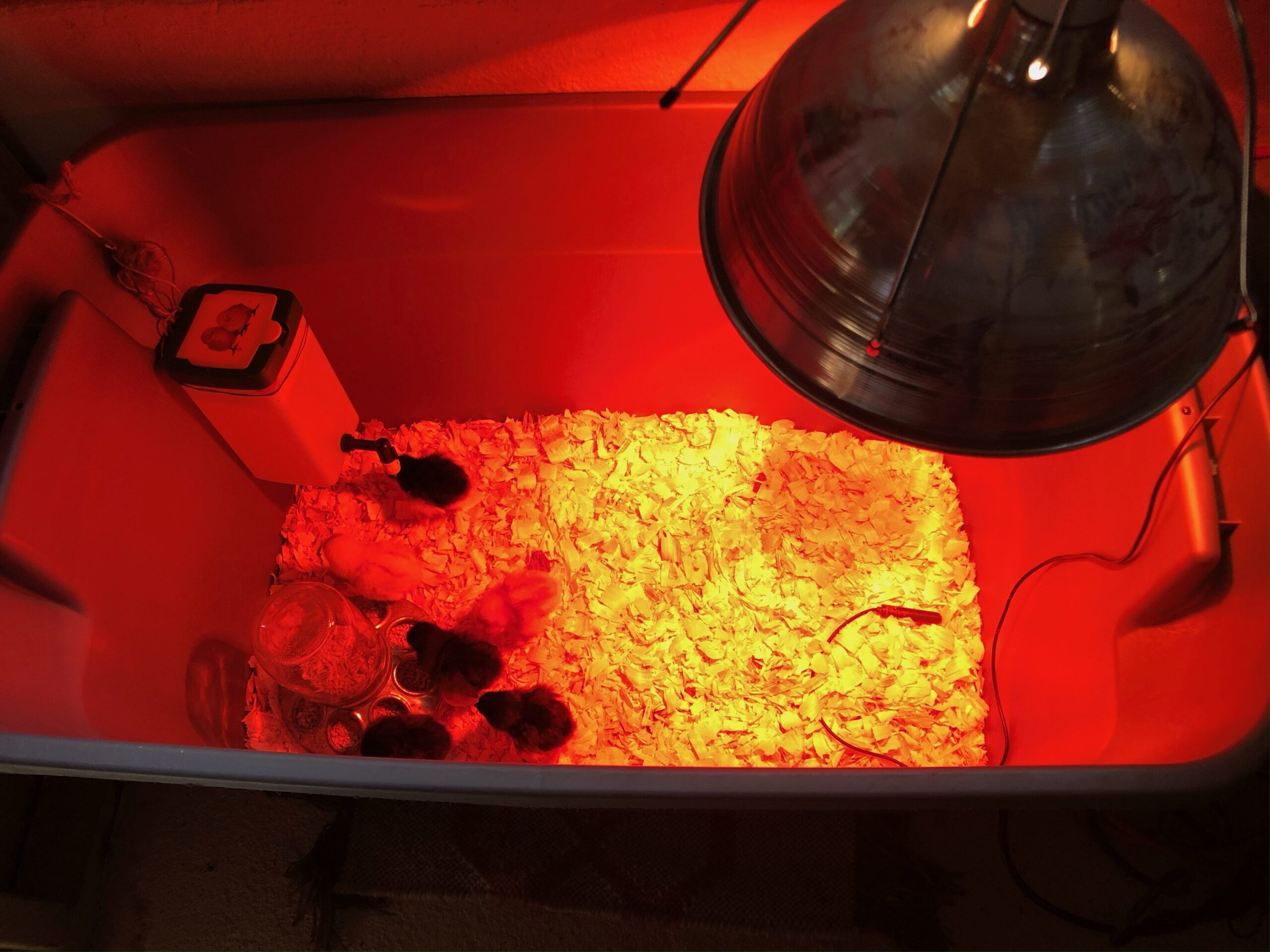
Bedding:
Put down a thick layer of wood shaving to soak up the chicks manure and spilled water. You can buy bails of wood shavings at tractor supply. Instead of putting the chicks through the stress of taking them and the soiled shaving out every few days I just keep adding dry shaving on top of the soiled layer. If there is any smell when walking into the brooder room you know you need more shavings. The shavings also allow the chicks to sharpen their beaks by dragging them across the shavings.
Heat Source:
In the beginning I used a heat lamp to keep my chicks warm. You want a hot and cool side. The first week the hot side should be 90-95 degrees. After a few days I will start to move the heat lamp away from the brooder incrementally – lowering the floor temperature a few degrees. If you see the chicks are huddled together on the hot side you know that they are too cold, so move the lamp closer. And if they are pressed on the colder end of the brooder you know they are too hot and you need to move the heat source away. Having a thermometer in the brooder is helpful to get the temperature dialed in where you want it.
Recently we invested in an electric hover heat plate from Premier 1 Supplies – https://www.premier1supplies.com. This not only is less of a fire hazard but more closely simulates the warmth of a mother hen. The chicks will run out from the heat to drink and eat.
Feed:
I put my water and feed on the cool side of the brooder. The first feed we give our chicks is an organic chick starter feed. This feed has a high % of protein about 20-24% which is essential for young chicks to thrive. They should be on this high protein feed for at least the first couple months before getting switched to a lower protein feed.
At this point in their lives they should never be left without feed, so keep their trough full day and night. Along with the feed, in a separate container, offer the chicks some grit. Girt is crushed stone, you will need fine crushed stone for chicks, this helps them break down and more easily digest the grain. You can find grit at tractor supply or go down to a near by river bed and grab some handfuls of gritty sand. I will throw in a handful of grass each day and occasionally scramble up a plain egg for them.
Water:
You must keep the water fresh and clean each day. The chicks will inevitably scratch shaving into the water that you must clean out. The waterer should be raised off the ground to just below their beak when the chick is standing. This helps with cleanliness and is easer for them to drink. The first time I give them water I will put a splash of apple cider vinegar and honey in the water. As I am taking the chicks out of the box and putting them into the brooder I will dip their beaks in the water before letting them go.
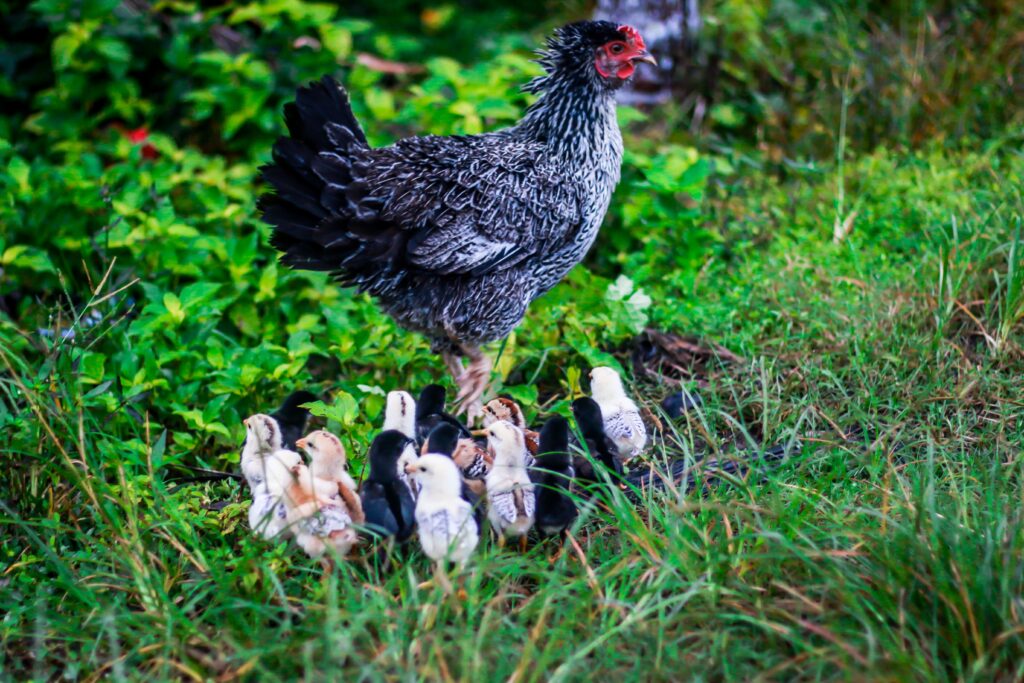
Interacting with your chicks:
It is tempting to constantly handle the cute young chicks especially when you have young children, but it’s best to leave them alone. It is fun to observe chicks go about their day. The trick is to sit still for a few minutes so the chicks are comfortable enough to move about. They spook easy at first, but soon they will adjust to your presence and calm down as long as you are gentle with them. Like most babies they sleep most of the day away.
A malnourished stressed baby chick will not thrive into adulthood. The first few months of a chicks life is extremely critical to having a productive laying hen in your future. If you are not feeding enough or the living conditions are inadequate you will absolutely see the negative affects later in life – mostly through poor egg production. Keep your chicks happy and healthy and you will reap the benefits for years to come.
Looking out for part 2 on raising chickens.

I was more than happy to discover this site. I wanted to thank you for your time just for this fantastic read!! I definitely really liked every little bit of it and I have you book-marked to look at new information in your website.